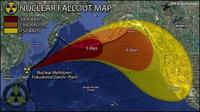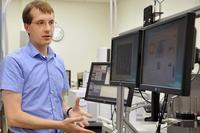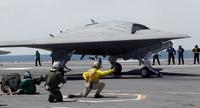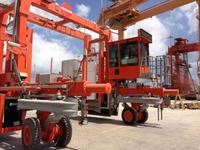-
British MPs vote against U.K. military participation in attack on Syria
In a heavy defeat to Prime Minister David Cameron, , the British Parliament voted against British military contribution to or involvement in an attack on Syria in response to the Assad regime’s use of chemical weapons last week. The vote is an embarrassing defeat for Cameron, and a major set-back for President Obama’s plan to put together a coalition of the willing to strike military targets in Syria. The parliamentary vote has no military significance, as the British contribution to the actual military operations would have been minimal at best. The U.K. vote, rather, is a political blow to the United States as it highlights on-going skepticism among Western publics – including U.S. public opinion — about yet another Western military involvement in the Middle East.
-
-
UN withdraws inspectors from Syria ahead of schedule
UN secretary-general Ban Ki-moon has instructed the UN weapons inspectors investigating last Wednesday’s chemical weapons attack to leave Syria by Saturday. The withdrawal of UN inspectors in the face of an imminent military campaign is reminiscent of other instances of early departures of UN weapons inspectors from Iraq in December 1998. The Clinton administration tipped the inspectors off that missile strikes against Saddam Hussein’s regime were imminent.
-
-
Divisions in U.K. over Syria action
A U.S.-led attack on Syrian targets in response to the Syrian military’s use of chemical weapons in an attack on Sunni civilians last Wednesday may be delayed until next week in the face of strong opposition in the U.K. parliament to British involvement. Prime Minister David Cameron said MPs would be given a second vote to approve military action ahead of a Commons debate today (Thursday) on Syria, in order to defuse a parliamentary revolt. About seventy Tory MPs said they would join the Labor opposition in voting against the U.K. participating in the attack on Syria. Some of the opponents of U.K. participation say a UN approval of such an attack would be needed, while others say they want to see clear-cut proof of the Assad regime’s culpability.
-
-
Fukushima radioactive plume to reach U.S. next year

The radioactive ocean plume from the 2011 Fukushima nuclear plant disaster will reach the shores of the United States within three years from the date of the incident, but is likely to be harmless, according to a new study. While atmospheric radiation was detected on the U.S. west coast within days of the incident, the radioactive particles in the ocean plume take considerably longer to travel the same distance.
-
-
3D Earth model accurately pinpoints source of earthquakes, explosions
During the cold war, U.S. and international monitoring agencies could spot nuclear tests and focused on measuring their sizes. Today, they are looking around the globe to pinpoint much smaller explosives tests. Researchers are working on developing a 3-D model of the Earth’s mantle and crust called SALSA3D. The purpose of this model is to assist the U.S. Air Force and the international Comprehensive Nuclear-Test-Ban Treaty Organization (CTBTO) in Vienna, Austria, more accurately locate all types of explosions.
-
-
New technology improves IED detection

Improvised explosive devices, or IEDs, are homemade bombs that can both injure and kill civilians and service members. One solution to the problem of IEDs is to find them before they explode by detecting the chemicals used in the explosives. Scientists at the U.S. Naval Research Laboratory (NRL) have developed a technology, using silicon to fabricate a sensor that may revolutionize the way trace chemical detection is conducted
-
-
U.S., allies prepare military strikes against Syria

Secretary of State John Kerry yesterday said that the use by the Assad regime of chemical weapons in attacks on civilians last Wednesday was undeniable. He said the Obama administration would hold the Syrian government accountable for this “cowardly crime” and “moral obscenity.” U.S. political and military leaders have been holding around-the-clock discussions with allies about a coordinated military attack on Syrian regime facilities. The United States, the United Kingdom, France, and Turkey said there was no need to seek a UN Security Council approval of military action against Syria, and that none will be sought. Administration lawyers have been crafting legal justifications for an intervention without UN approval that could be based on findings that Assad used chemical weapons and created a major humanitarian crisis. The U.S. Navy has moved more ships to the eastern Mediterranean, and activity has been stepped up in Britain’s air base in Cyprus.
-
-
Long-term radiation effects: Chernobyl’s lessons for Fukushima
The Fukushima Daiichi nuclear disaster spread significant radioactive contamination over more than 3,500 square miles of the Japanese mainland in the spring of 2011. Now several recently published studies of Chernobyl are bringing a new focus on just how extensive the long-term effects on Japanese wildlife might be.
-
-
Nanoparticles in food pose health risks
Nanomaterials are increasingly used in water treatment, food packaging, pesticides, cosmetics, and other areas. There is a growing concern that these particles could pose a potential health risk to humans and the environment. In a new study, researchers have developed a reliable method for detecting silver nanoparticles in foods.
-
-
Boob bombs: breast implants suicide bomb a threat to aviation
Security checks at Heathrow Airport have been beefed up this past week following “credible” intelligence that al Qaeda operatives may use a new method to attack airlines flying out of London: explosives concealed in breast implants. This would not the first time Al Qaeda in the Arabian Peninsula’s (AQAP) chief bomb maker, Ibrahim al-Asiri, has sought to use the human body as a hiding place for explosives. In September 2009, al-Asiri sent his younger brother on a suicide mission in Saudi Arabia. He built a bomb which could fit in his brother’s anal cavity, and sent him to kill the Saudi deputy interior minister, who at the time was in charge of hunting down al Qaeda operatives in Saudi Arabia. The worry about medically implanted explosives has already led airports to use behavioral analysis to augment detection methods already in use to screen people. Body scanners are good at identifying things outside the body but not inside.
-
-
New understanding of key step in anthrax infection
Scientists advance A new hypothesis concerning a crucial step in the anthrax infection process. The research teams have explored the behavior of the toxins that rapidly overwhelm the body as the often-fatal disease progresses. Their findings suggest a new possible mechanism by which anthrax bacteria deliver the protein molecules that poison victims. Anthrax is easily weaponized; the findings could help lead to a more effective cure.
-
-
Conflicting readings of possible chemical weapons use in Syria
Rebel sources say the number of dead in a Syrian army chemical weapons attack, which targeted a dozen villages in a rebel-held area east of Damascus, is between 750 and 1,300. They say it is not possible to offer precise numbers because some areas are not yet accessible. The Syrian government strongly rejected the allegations about chemical weapons use by the Syrian army. The Israeli defense minister, in the first official Israeli reaction, confirms the Syrian military used chemical weapons. Chemical weapons experts say there are two other possibilities: the Syrian regime may have used crowd-dispersal chemicals in higher-than-usual concentration, causing death among people trapped in bunkers and shelters; or the army may have used fuel-air bombs in bombing Sunny residential areas. Such bombs, also called thermobaric explosives, rely on oxygen from the surrounding air, unlike most conventional explosives which consist of a fuel-oxidizer premix.
-
-
U.S. nuclear reactors vulnerable to terrorist attack: study
More than ten years after the 9/11 hijackers considered flying a fully loaded passenger jet into a Manhattan area nuclear reactor, U.S. commercial and research nuclear facilities remain inadequately protected against two credible terrorist threats — the theft of bomb-grade material to make a nuclear weapon, and sabotage attacks intended to cause a reactor meltdown. A new report finds that none of the 104 commercial nuclear power reactors in the United States is adequately protected — but among the most vulnerable are eleven reactors in California, Connecticut, Florida, Maryland, Massachusetts, Missouri, New York, North Carolina, Texas, and Virginia. One of these reactors, on the grounds of the National Institute of Standards and Technology (NIST), is among the three research reactors fueled with bomb-grade uranium, and is located in the Washington, D.C. suburb of Gaithersburg, less than twenty-five miles from the White House.
-
-
U.S. radiation exposure guidelines based on unvalidated assumptions: toxicologist
In the 1950s regulators came to adopt the linear no threshold (LNT) dose-response approach to ionizing radiation exposure, which was later generalized to chemical carcinogen risk assessment. A UMass Amherst toxicologist now offers further evidence to support his earlier assertions that two geneticists deliberately suppressed evidence to prevent the U.S. National Academy of Sciences (NAS) from considering an alternative, threshold model, for which there was experimental support. “This isn’t an academic debate; it’s practical, because all of our rules about chemical and low-level radiation are based on unvalidated assumptions and scientific panel decisions made without sound evidence,” the toxicologist says.
-
-
Detecting radioactive material smuggled in containers

Nearly 90 percent of imported and exported goods travel the globe in shipping containers. Roughly 500 million containers travel the sea each year. A Sandia National Laboratories team completed acceptance testing on an enormous mobile scanner — the Mobile Radiation Detection and Identification System (MRDIS) — which makes smuggling radiological materials in containers more difficult.
-
More headlines
The long view
Keeping the Lights on with Nuclear Waste: Radiochemistry Transforms Nuclear Waste into Strategic Materials
How UNLV radiochemistry is pioneering the future of energy in the Southwest by salvaging strategic materials from nuclear dumps –and making it safe.
Model Predicts Long-Term Effects of Nuclear Waste on Underground Disposal Systems
The simulations matched results from an underground lab experiment in Switzerland, suggesting modeling could be used to validate the safety of nuclear disposal sites.
